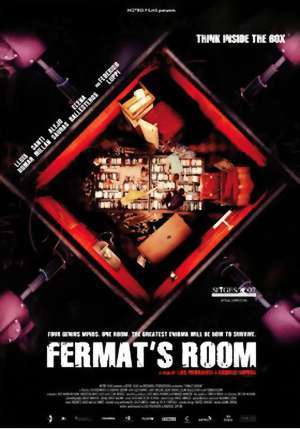European Union Film Festival: Fermat's Room and About Water
By Rob Christopher in Arts & Entertainment on Mar 6, 2009 6:40PM

directed by Luis Piedrahita and Rodrigo Sopeña
Fermat's Room (screens 3/8 and 3/10)
A math thriller? You bet. But this brisk suspense yarn is no Pi. There's no tortured paranoia on display, just the playful satisfaction of working through a tricky game. Four brilliant mathematicians are invited to a secluded retreat by an unseen host. Of course, once they get there they're imprisoned in a slowly-shrinking room, and their only hope of escape is to answer a series of logic puzzles. Like any mystery, what makes this movie so fun is trying to guess how the filmmakers will follow through on their premise. A cheeky attitude lets us know not to take the whole thing too seriously, but it's still very stylish. And if you happen to love geometry and logic problems, you'll be in ecstasy.
About Water: People and Yellow Cans (screens 3/10 and 3/11)
This poetic, haunting documentary uses a three-part structure to examine what happens when there's too much water (Bangladesh) or not enough of it (the Aral Sea, and a slum of Nairobi). There is no narration; images of the landscape and the people in them are eloquent enough. An 85 year-old man in Bangladesh talks about the fifteen times he's had to move during his lifetime because of flooding, while rusted ships sit in the Kazakhstan desert because the receding Aral Sea is now 150 kilometers away. The presence of the First World is felt in a surprising way: in the slums of Nairobi, where there are only 15 water stations to serve a population of 1.5 million, everyone uses mass-produced plastic yellow jugs to transport the water they need. Some of them are asked what they would do if they lived in houses with running water. Their answers will make you think about Lake Michigan in a whole new way.